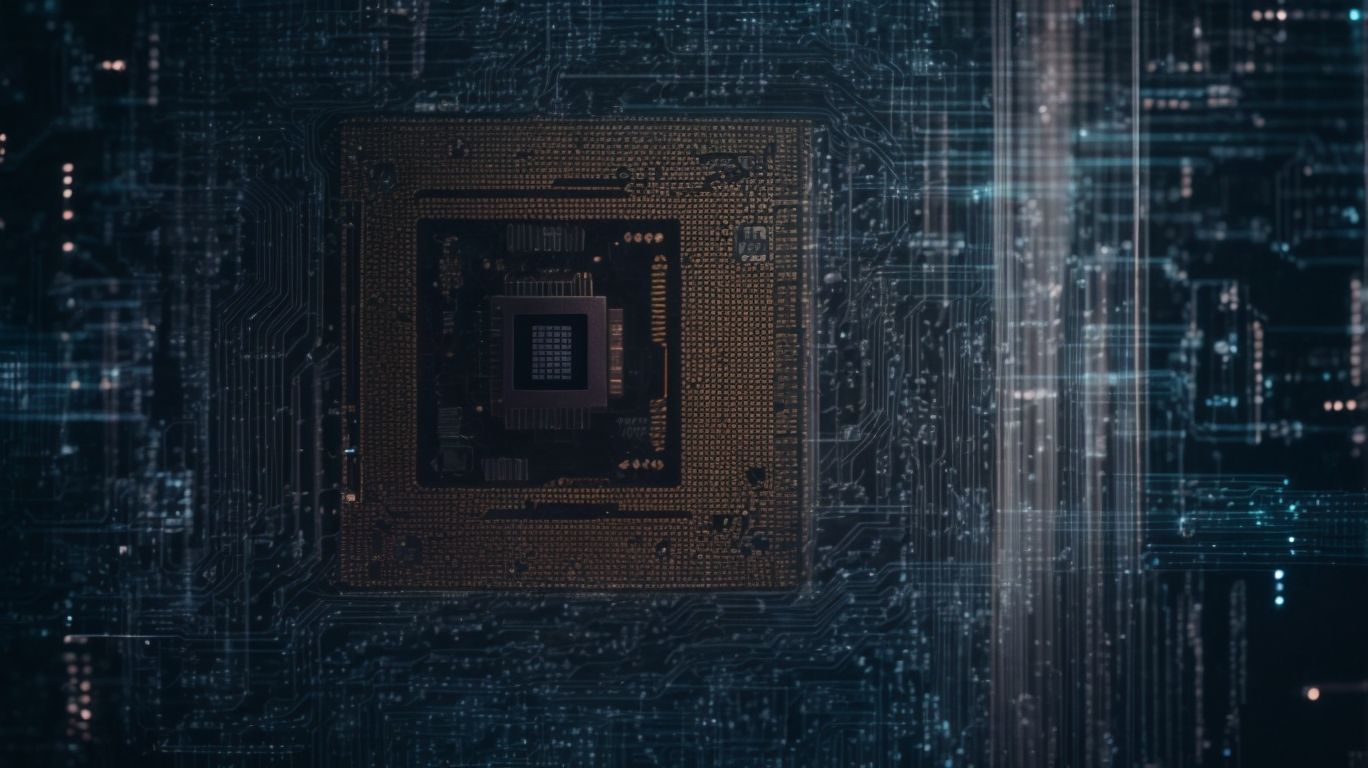Biometric security has become increasingly popular in recent years due to its numerous benefits. From increased security and accuracy to convenience and ease of use, biometric technology offers many advantages.
However, there are also drawbacks to consider, such as privacy concerns and vulnerability to hacking.
In this article, we will explore the pros and cons of biometric security, discuss current uses, and delve into future possibilities and advancements in this field.
Is biometric security the future? Let’s find out.
Table of Contents
Key Takeaways:
Biometric security offers increased security and accuracy, making it a reliable form of identification and access control. While convenient and cost-effective, biometric security raises privacy concerns and is vulnerable to hacking and data breaches. Advancements in multi-modal, mobile, behavioral biometrics, and biometric encryption may enhance the future of biometric security.
The Pros of Biometric Security
Biometric security offers enhanced protection and precision in verifying user identities, ensuring a robust safeguard for sensitive data and resources.
One of the key advantages of biometric security is the heightened level of accuracy it provides in authenticating users, as it relies on unique biological traits such as fingerprints, iris patterns, or facial features for identification.
This not only minimizes the risk of unauthorized access but also eliminates the vulnerabilities associated with traditional password-based systems that can be easily hacked or compromised.
Biometric authentication offers a seamless access experience for users, allowing for quick and convenient verification without the need to remember complex passwords or undergo lengthy verification processes.
Increased Security and Accuracy
The integration of biometric security enhances the overall security posture by utilizing unique biological traits or behavioral characteristics for precise user identification and authentication.
Biometric security technology, such as fingerprint recognition, iris scanning, facial recognition, or voice authentication, offers a more reliable and secure approach to access control and data protection than traditional methods based only on passwords or PINs.
By relying on distinctive biological features or behavioral traits that are unique to each individual, biometric systems significantly reduce the risk of unauthorized access and identity fraud.
This advanced technology enhances the level of accuracy in user verification processes, providing organizations with a robust defense against cybersecurity threats and potential breaches.
Convenience and Ease of Use
Biometric security not only bolsters security measures but also simplifies user access through seamless authentication methods, enhancing overall user experience across various applications.
By utilizing unique biological characteristics like fingerprints, facial recognition, or iris scans for verification, biometric systems offer a convenient and secure way for users to access their devices, accounts, or physical spaces.
Biometric authentication eliminates the need for cumbersome passwords or PINs, reducing the risk of unauthorized access or identity theft. The intuitive nature of biometric technology streamlines the authentication process, making it user-friendly and accessible for individuals of all technical proficiencies.
Cost-Effective
Biometric security solutions present a cost-effective approach for organizations, streamlining authentication processes and reducing costs associated with traditional security measures.
By leveraging biometric technology, organizations can significantly reduce expenses related to password management, badge systems, and manual security checks. This not only leads to direct cost savings but also enhances operational efficiency, as employees spend less time on cumbersome authentication procedures.
The implementation of biometric security offers a higher level of security since biometric identifiers are unique to individuals, making it harder for unauthorized access to occur. The pattern recognition capabilities of biometric systems also contribute to fraud detection and prevention, ultimately saving organizations from potential financial losses.
Difficult to Duplicate or Replicate
The uniqueness and accuracy of biometric identifiers pose significant challenges to unauthorized replication or duplication, underscoring the inherent advantages and security benefits of biometric authentication.
Biometric identifiers are unique to each individual, such as fingerprints, facial features, iris patterns, and voiceprints. This uniqueness makes it exceptionally difficult for fraudulent attempts at access. The accuracy of biometric systems ensures reliable verification without the need for passwords or tokens, enhancing user convenience. Despite these strengths, the potential risk of data breaches or privacy concerns remains a challenge with biometric data. Organizations need to address these concerns proactively to fully leverage the robust security offered by biometric authentication.
The Cons of Biometric Security
Despite its benefits, biometric security raises concerns related to privacy, potential data breaches, false positives, and challenges in tracking and system integration.
One of the primary drawbacks of biometric security systems is the privacy concerns they raise. People are often worried about the storage and potential misuse of their personal biometric data, considering it highly sensitive information. These systems can be vulnerable to data breaches, putting individuals’ biometric information at risk of being compromised by malicious actors. False positives – when the system incorrectly identifies an individual – can lead to security gaps, as unauthorized access may be granted by mistake.
Another significant challenge is the difficulty in tracking individuals accurately. Factors such as changes in one’s biometric data over time or environmental conditions can impact the system’s reliability in identifying users correctly. Furthermore, system integration poses a challenge, especially in cases where different systems need to interact seamlessly for effective security measures, creating compatibility issues and potential gaps in protection.
Privacy Concerns
Privacy concerns arise in biometric security due to regulatory requirements, individual data protection rights, tracking implications, and potential biases in data processing.
Regarding regulatory compliance in biometric security, organizations need to navigate through a complex web of laws and standards to ensure they are handling personal data appropriately. From GDPR in Europe to CCPA in California, privacy regulations require meticulous attention to detail.
Individual privacy rights play a crucial role in this context. People want assurance that their biometric data, such as fingerprints or facial recognition profiles, is safeguarded from misuse or unauthorized access.
Tracking challenges add another layer of complexity. While biometrics offer enhanced security, the potential for tracking individuals raises concerns about surveillance and potential abuses of power.
Biases in data handling, such as algorithmic discriminations, pose significant ethical dilemmas. Ensuring algorithms are trained on diverse datasets and regularly audited becomes imperative to mitigate biased outcomes.
Vulnerability to Hacking and Data Breaches
Biometric systems are not immune to hacking and data breaches, posing security risks that necessitate continuous authentication methods and robust system implementations.
This vulnerability is further exacerbated by the potential exploitation of biometric data which, once compromised, cannot be changed like passwords or PINs. Implementing multi-factor authentication alongside biometric systems can provide an extra layer of security by requiring the use of additional credentials, reducing the chances of unauthorized access.
Regular system updates and patches are essential to address newly discovered vulnerabilities and ensure the system’s resilience against evolving cyber threats. Organizations must prioritize employee training on best security practices and protocols to mitigate risks associated with human error and negligence.
False Rejections and Inconvenience
False rejections, inaccuracies, and associated costs can lead to inconveniences in biometric authentication processes, highlighting the challenges related to false positives and tracking inaccuracies.
False positives in biometric authentication refer to instances when an unauthorized person is granted access due to a mistaken identity match, compromising security measures. These occurrences not only pose serious risks of breach but also raise concerns about the reliability of the system. Inaccuracies in biometric data matching can result in delays, frustration, and heightened security vulnerabilities. The remedial actions required to rectify these errors may entail significant costs, increasing the financial burden on organizations. Tracking challenges further complicate the situation, as maintaining accurate records and ensuring seamless integration with existing systems are critical for effective authentication processes.
High Implementation and Maintenance Costs
The high initial implementation costs and ongoing maintenance expenses associated with biometric systems pose significant financial challenges for organizations adopting this technology.
Implementing biometric security systems can require substantial investments in specialized hardware, software, and employee training, driving up the overall cost for organizations. These expenses encompass not only the purchase of biometric devices but also the integration of the system with existing infrastructure, which often demands additional resources and expertise.
Financial planning becomes crucial as organizations consider the long-term financial implications of maintaining these systems. Regular upgrades, software updates, and technical support are essential components that contribute to the continuous financial commitment required for ensuring the effectiveness and security of biometric solutions.
Current Uses of Biometric Security
Biometric security finds application in diverse sectors, encompassing user verification in systems, devices, and applications to ensure secure access and information protection.
One of the primary applications of biometric security is in the field of law enforcement and border control, where fingerprint, facial recognition, and iris scanning technologies are used to authenticate identities and track criminal activities. Such biometric verification methods have significantly enhanced security measures, enabling rapid identification of suspects and potential threats.
Biometric authentication is extensively utilized in the healthcare sector for safeguarding patient information and ensuring accurate identity verification of individuals accessing medical records and treatment facilities.
Future Possibilities and Advancements in Biometric Security
The future of biometric security holds promise with ongoing innovations, regulatory enhancements, and technological advancements shaping the trajectory of this field towards greater security and usability.
In recent years, the landscape of biometric security has witnessed a significant evolution, driven by an array of factors that are redefining the conventional boundaries of security protocols. Regulatory changes have been instrumental in ensuring the adoption of standardized practices across industries and regions, thereby promoting interoperability and data security. Moreover, technological innovations such as the integration of AI algorithms and the development of more sophisticated biometric sensors have bolstered the overall accuracy and reliability of biometric systems.
Looking ahead, the emerging trends in biometric security indicate a shift towards multi-modal systems that combine various biometric modalities to enhance security measures. The utilization of biometrics in sectors beyond traditional security, like banking and healthcare, is poised to revolutionize access control and identity verification processes.
Multi-Modal Biometric Systems
Multi-modal biometric systems offer enhanced security solutions by combining multiple authentication measures, patterns, and measurements across various devices and platforms for comprehensive user verification.
One of the core strengths of multi-modal biometric systems lies in their ability to significantly improve security layers by integrating diverse methods of verification, such as fingerprints, facial recognition, iris scans, voice recognition, and even behavioral patterns. This integration ensures a robust defense mechanism against unauthorized access, reducing the risk of impersonation or fraud.
- The versatility of multi-modal biometric systems allows for seamless adaptation across different devices and platforms, enabling a user-friendly experience without compromising security standards. By offering a multi-layered approach to authentication, these systems not only enhance security but also streamline the verification process, making it convenient and efficient for end-users.
Mobile Biometrics
Mobile biometrics present a convenient and secure authentication method for users accessing applications and services on their smartphones, mitigating risks associated with traditional password-based systems.
One of the key advantages of biometric security in mobile technology is its heightened level of security. By using unique physiological characteristics such as fingerprints, facial recognition, or iris scans, biometric authentication provides a highly secure means of verifying the user’s identity.
The usability of biometric security in mobile devices is exceptionally user-friendly. Users can simply tap a finger, look at the camera, or speak a passphrase to quickly and effortlessly unlock their devices or access sensitive information.
The accuracy of biometric authentication in mobile technology is also noteworthy. With advancements in technology, the margin of error in biometric identification has significantly decreased, ensuring precise and reliable user verification.
Behavioral Biometrics
Behavioral biometrics analyze unique user traits and behavior patterns to enhance security measures, presenting challenges in accurate identification and continuous monitoring of individual characteristics.
One of the distinguishing features of behavioral biometrics is its focus on individual movements, gestures, and interaction patterns rather than static data like passwords or fingerprints. By analyzing these dynamic behaviors, systems can detect anomalies that may indicate fraudulent activities. The accuracy of behavioral biometrics heavily relies on the ability to differentiate legitimate variations in behavior from malicious attempts to access a system.
This dynamic nature also introduces challenges in maintaining consistent authentication levels, as user behaviors can evolve over time. The ethical considerations surrounding the continuous monitoring of behaviors for security purposes raise important questions regarding user privacy and consent.
Biometric Encryption
Biometric encryption techniques leverage unique biological characteristics, such as facial recognition, for secure data storage and communication, enhancing privacy protection and data security measures.
Facial recognition technology, a prominent form of biometric authentication, has gained widespread popularity due to its accuracy and efficiency in verifying individuals’ identities.
By analyzing distinct facial features, biometric encryption ensures that only authorized users can access sensitive information, reducing the risk of unauthorized access and data breaches.
The integration of biometric data adds an extra layer of security, as these unique biological traits are incredibly difficult to replicate or forge.
Conclusion: Is Biometric Security the Future?
Biometric security presents a compelling case for the future of authentication and access control, with its advantages and challenges shaping the landscape of continuous authentication and regulatory frameworks.
Biometric technologies, such as fingerprint recognition and facial scanning, have seen widespread adoption in various industries, ranging from smartphone security to border control. This trend is likely to continue as businesses and governments prioritize security and user convenience. The advancements in biometric sensors and algorithms are making authentication more accurate and efficient, reducing the risks associated with traditional methods like passwords and PINs.
Continuous authentication is emerging as a key trend in the biometric security domain, enabling seamless user verification throughout the entire interaction, rather than just at login. This dynamic approach enhances security by constantly monitoring user behavior and physiological characteristics. https://www.youtube.com/embed/KdZTU39vSQg
Frequently Asked Questions
What is biometric security and how is it used in the present?
Biometric security is a form of digital security that uses unique physical or behavioral characteristics, such as fingerprints, facial recognition, and voice recognition, to identify and authenticate individuals. It is currently used in various applications, such as unlocking smartphones, accessing bank accounts, and in border control systems.
What are the pros of using biometric security in the future?
Biometric security offers a more secure and convenient way of authentication compared to traditional methods like passwords or PIN codes. It also eliminates the risk of identity theft, as biometric data cannot be easily replicated or stolen.
What are the potential cons of implementing biometric security in the future?
One potential concern is the privacy of individuals, as biometric data is highly personal and sensitive. There is also the risk of biometric data being hacked or misused, which could have serious consequences. Additionally, the cost of implementing biometric systems may be a barrier for some organizations.
Will biometric security completely replace traditional forms of authentication in the future?
It is possible that biometric security will become the primary method of authentication, but it is unlikely to completely replace traditional methods. Biometric systems may be used in conjunction with other forms of authentication to provide an extra layer of security.
What are some potential future advancements in biometric security?
Advancements in technology may lead to the use of more sophisticated biometric measures, such as gait recognition or heart rate monitoring, for even more accurate and secure authentication. There may also be developments in multi-factor biometric authentication, combining multiple biometric factors for increased security.
Are there any ethical concerns surrounding the use of biometric security in the future?
Yes, there are potential ethical concerns, such as the collection and storage of biometric data without individuals’ consent or knowledge. There may also be issues with bias in biometric systems, as they are only as accurate as the data they are trained on, which can perpetuate discrimination and prejudice.






